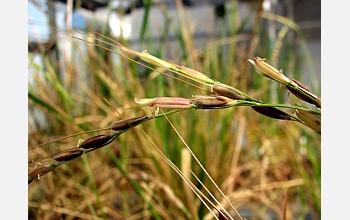From FoodNavigator, two stories about cool genes: one from an orange cauliflower that could be used to increase beta-carotene in other crops, and one from coffee that could make for a better-tasting cup. It’s always fun to hear about such genes. Now comes the hard part, I guess.
How breeders use genome information
Everything you’ve always wanted to know about the use of genomic information in plant breeding but were afraid to ask is covered in a feature article from the US Department of Agriculture. Well, not quite everything, but Improving Crop Plants Through Genomics does offer a quick run down on some of the techniques and some of the projects, including one on nutritional quality and others on marginal environments and pests and diseases.
Opium poppies
There are a couple of interesting articles in this week’s print issue of The Economist, but they are both premium content on the web, so I’ve dug a bit deeper for you and will post on them separately. One article contrasts the global shortage of opiates for medical use with the efforts being made to stop Afghani farmers growing the opium poppy for the heroin trade. A crazy situation. One possible solution is licensing farmers to grow the crop under strict controls, but that is not without difficulties, especially in a place like Afghanistan. However, there is a possible scientific solution. It turns out that Tasmania, of all places, is an important opium poppy producer, and researchers at “Tasmanian Alkaloids recognised that there was a possibility of breeding a poppy variety in which the biosynthetic pathway stopped at thebaine instead of going on to produce morphine.” That would make it ok for therapeutic opiate production but useless for the illicit drug trade. You can read all about it here. There’s a paper on poppy transformation here and one on poppy genetic diversity here.
US$14 million for genome studies
 The National Science Foundation in the US has announced grants totaling US$14 million for genome studies of “economically important plants”. Among the many projects will be one on red rice (seen left, photo courtesy of Washington University St Louis), a weedy variant that contaminates rice fields in the US. It reduces yields by up to 80% and researchers hope to discover whether it originated from cultivated rice or was imported, possibly accidentally, as a weed from Asia. A similar study will focus on weedy versions of radish. This could lead to a deeper understanding of just what makes some populations weedy and invasiveness, and hence to better control. One the other hand, maybe they should just develop a local market for red rice.
The National Science Foundation in the US has announced grants totaling US$14 million for genome studies of “economically important plants”. Among the many projects will be one on red rice (seen left, photo courtesy of Washington University St Louis), a weedy variant that contaminates rice fields in the US. It reduces yields by up to 80% and researchers hope to discover whether it originated from cultivated rice or was imported, possibly accidentally, as a weed from Asia. A similar study will focus on weedy versions of radish. This could lead to a deeper understanding of just what makes some populations weedy and invasiveness, and hence to better control. One the other hand, maybe they should just develop a local market for red rice.
Other studies will look at genetic variation within cultivars of maize and pine trees and at the evolution of Brassicas, a highly diverse group. One can only hope that the information gathered will also help farmers and scientists to produce better adapted varieties for their own conditions, even if those conditions are far removed from the intensive agricultural fields of the US.
Micropropagating sweet potatoes
According to the Carolina, USA farmer featured in this article, “micropropagation is the name of the game in sweet potatoes.” “The bottom line is a very uniform crop,” he adds. That’s not necessarily everywhere a good thing, of course, but clean planting material is always important.